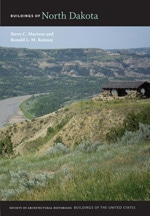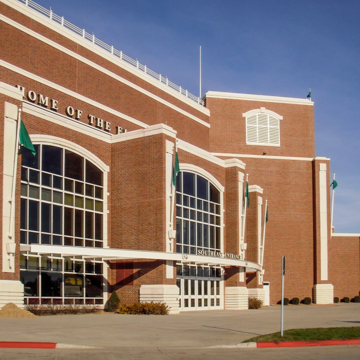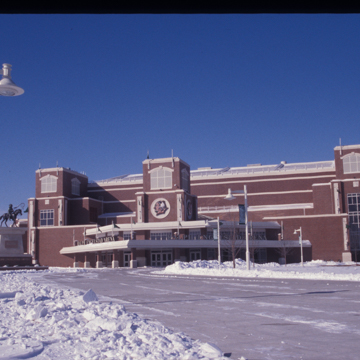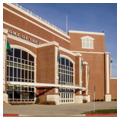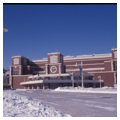From his investment successes in the Las Vegas Imperial Palace Hotel, former UND hockey player, entrepreneur, and Grand Forks booster Ralph Engelstad made a generous gift of this athletic showcase to his alma mater. The arena facility is understandably the envy of nearly every college hockey program in the United States. Further gifts from Ralph Engelstad and his wife, Betty, funded separate college and high school athletic facilities for hockey and for women’s sports. The buildings they funded are affectionately known locally as the “Ralph” and the “Betty.”
An awkward controversy ensued. The Engelstads insisted on commemorating the traditional athletic logo of the Fighting Sioux at every opportunity. There are reportedly more than twenty-two-hundred “Fighting Sioux” graphic logos permanently affixed to every part of this privately owned and operated building, promised as a complicated phased gift in years to come. The National Collegiate Athletic Association (NCAA), however, ruled that the logo’s association with Native Americans is offensive and unacceptable, and the issue has escalated to an impassioned matter of civil rights. Ten years of tribal resolutions and petitions, followed by enactment of state laws and constitutional amendments, have resulted in an uncomfortable public issue that refuses to go away.
The building is located several blocks to the north of the campus. Architecturally, Engelstad Arena is a somewhat ostentatious Postmodern treatment of classical themes that vaguely invoke campus traditions in thin brick and precast concrete. It is a wonderfully functional building that pays appropriate tribute to the lavish tastes and loyalty of a financially successful former athlete. Reconciling athletic culture with culturally sensitive architectural expression remains a political balancing act as awkward and uncomfortable as a three-year-old’s first attempt to balance on hockey skates.














